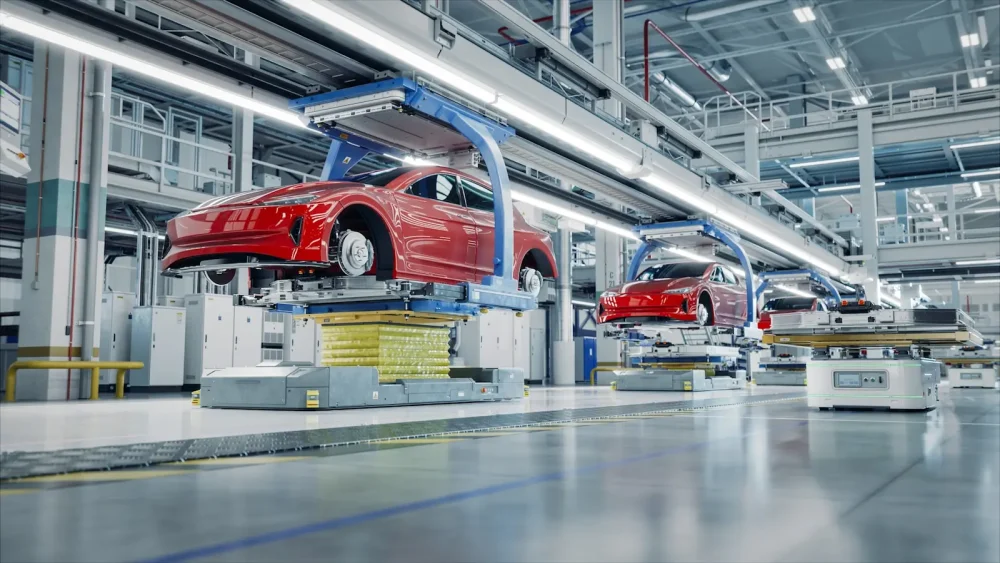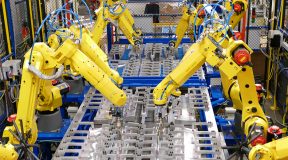Introduction
The automotive industry is a cornerstone of global transportation, impacting economies, technology, and daily life. From the earliest steam-powered vehicles to modern electric cars, the sector has continually evolved, reflecting innovation, consumer demand, and environmental considerations. Today, the automotive landscape is shaped not only by traditional car manufacturers but also by tech companies, startups, and global sustainability trends. Understanding the current state of the automotive industry and the factors driving change is crucial for industry professionals, investors, and car enthusiasts alike.
History and Evolution of the Automotive Industry
The origins of the automotive industry trace back to the late 19th century with inventors such as Karl Benz and Henry Ford leading the way. Karl Benz’s creation of the first gasoline-powered automobile in 1886 marked a transformative moment in personal transportation. Shortly after, Henry Ford revolutionized car manufacturing with the assembly line, making automobiles more affordable and accessible to the general public.
Over the decades, the industry expanded with innovations in safety, performance, and design. The mid-20th century saw the rise of iconic vehicles, increased consumer choice, and the emergence of global car brands. In recent years, however, the industry has shifted dramatically due to technological advancements, environmental awareness, and changing consumer behaviors, setting the stage for a new era in automotive development.
Key Segments in the Automotive Industry
The automotive industry comprises several essential segments, each contributing to the overall ecosystem:
- Passenger Vehicles: Cars, SUVs, and crossovers designed for personal use.
- Commercial Vehicles: Trucks, buses, and vans used for logistics, public transportation, and business purposes.
- Electric Vehicles (EVs): Vehicles powered by electricity instead of conventional fuel, gaining popularity due to sustainability concerns.
- Autonomous Vehicles: Self-driving technology that integrates sensors, AI, and machine learning to reduce human intervention.
- Aftermarket Services: Parts, maintenance, repairs, and modifications that sustain vehicle performance post-purchase.
Technological Innovations Driving Change
The automotive sector is undergoing unprecedented technological transformation. Key innovations include:
1. Electric and Hybrid Vehicles
The push for environmentally friendly transportation has accelerated the development of electric and hybrid vehicles. Companies like Tesla, Nissan, and Volkswagen have invested heavily in EV technology, offering vehicles with extended battery life, rapid charging, and advanced energy management systems. Hybrid vehicles, which combine internal combustion engines with electric motors, provide a bridge between traditional fuel-based cars and fully electric alternatives.
2. Autonomous Driving
Autonomous vehicles represent the future of mobility, promising increased safety, reduced traffic congestion, and improved efficiency. Advanced sensors, radar, LiDAR systems, and AI algorithms enable cars to navigate complex environments with minimal human input. While fully autonomous cars are still under testing in many regions, features like adaptive cruise control, lane-keeping assist, and self-parking are already becoming mainstream.
3. Connectivity and IoT Integration
Modern vehicles are increasingly connected to the internet and other devices, offering smart features such as remote diagnostics, over-the-air updates, and predictive maintenance. Connected vehicles use IoT (Internet of Things) technology to enhance safety, convenience, and efficiency, paving the way for smart cities and integrated mobility solutions.
4. Advanced Safety Features
Safety remains a top priority for automakers. Features such as automatic emergency braking, blind-spot monitoring, collision avoidance systems, and airbag innovations are now standard in many vehicles. Innovations in material science, including the use of lightweight but strong composites, contribute to safer yet more fuel-efficient vehicles.
Environmental Impact and Sustainability in Automotive
Sustainability has become a defining factor in the automotive industry. Governments worldwide are implementing stricter emissions standards and incentives for electric vehicles to curb pollution. Automakers are investing in green manufacturing processes, recyclable materials, and energy-efficient production techniques to minimize environmental footprints.
Battery technology, critical for EVs, is also evolving, with innovations focusing on longer lifespan, faster charging, and reduced environmental impact. Moreover, alternative fuels like hydrogen and biofuels are being explored to provide zero-emission solutions for both passenger and commercial vehicles.
Emerging Trends in the Automotive Market
Several trends are reshaping the automotive landscape today:
- Shift to Electric Mobility: EV adoption is accelerating globally, with governments offering tax incentives and infrastructure development such as charging stations.
- Ride-Sharing and Mobility-as-a-Service (MaaS): Companies like Uber, Lyft, and Bolt are redefining urban transportation, reducing the need for personal car ownership.
- Smart Manufacturing: Industry 4.0 technologies, including robotics, AI, and 3D printing, are enhancing production efficiency and quality.
- Global Supply Chain Optimization: Automakers are adopting digital supply chain solutions to manage disruptions and improve resilience.
- Customization and Personalization: Consumers increasingly demand cars that reflect their lifestyle and preferences, leading to modular designs and bespoke options.
Challenges Facing the Automotive Industry
Despite its growth and innovation, the automotive sector faces several challenges:
- Supply Chain Disruptions: Global events like the semiconductor shortage and raw material scarcity impact production timelines and costs.
- High Initial Investment for EVs: Electric vehicle production requires significant capital, particularly for battery technology and infrastructure.
- Regulatory Compliance: Meeting evolving emissions and safety standards worldwide adds complexity and cost to manufacturing.
- Competition from Tech Companies: Tech giants entering the automotive space challenge traditional automakers to innovate rapidly.
- Consumer Adoption Barriers: Hesitancy to adopt EVs or autonomous vehicles due to price, infrastructure, or safety concerns.
Future Outlook for Automotive Industry
The automotive industry is poised for continued growth, innovation, and transformation. Analysts predict that electric vehicles will constitute a significant portion of global car sales by 2030, with autonomous driving technology becoming increasingly common in urban centers. Integration of artificial intelligence, machine learning, and connectivity will make cars safer, more efficient, and personalized.
Moreover, shared mobility services, urban planning innovations, and sustainability initiatives are likely to redefine the concept of car ownership itself. Automakers that invest in research, technology, and green solutions will be best positioned to thrive in this evolving market.
Conclusion
The automotive industry stands at the intersection of technology, sustainability, and consumer demand. Innovations in electric vehicles, autonomous systems, and connectivity are transforming how people move, while challenges in supply chains, regulation, and consumer adoption persist. As the industry continues to evolve, it offers exciting opportunities for manufacturers, investors, and consumers to embrace smarter, greener, and more efficient transportation solutions.
FAQ Section
1. What are the main benefits of electric vehicles over traditional cars?
Electric vehicles produce zero tailpipe emissions, reduce fuel costs, and often require less maintenance due to fewer moving parts.
2. How close are we to fully autonomous cars?
While fully autonomous cars are still in testing, advanced driver-assistance systems (ADAS) such as lane-keeping assist, adaptive cruise control, and automated parking are widely available today.
3. What role do IoT and connectivity play in modern vehicles?
IoT enables vehicles to communicate with other devices, traffic systems, and cloud platforms, enhancing safety, navigation, and predictive maintenance.
4. Are hydrogen-powered vehicles a viable alternative to electric cars?
Hydrogen vehicles offer zero emissions and fast refueling, but infrastructure limitations and high production costs remain challenges for widespread adoption.
5. How is sustainability being addressed in automotive manufacturing?
Automakers are adopting energy-efficient production methods, using recyclable materials, and investing in green supply chains to reduce environmental impact.
6. What trends will shape the future of car ownership?
Shared mobility services, electric vehicles, autonomous technology, and smart city infrastructure will influence how consumers access and use vehicles in the future.
7. How do safety innovations improve driving experience?
Advanced safety features such as collision avoidance, blind-spot monitoring, and adaptive braking systems enhance protection for drivers, passengers, and pedestrians while making driving more comfortable.
This comprehensive look at the automotive industry highlights its dynamic nature, emphasizing innovation, sustainability, and consumer-centric transformation as the driving forces of its future.





